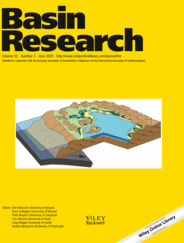
Full text loading...
 , Vinyet Baqués1,2
, Vinyet Baqués1,2 , Anna Travé3, Juan Diego Martín‐Martín3, Eduard Saura1,4, Gregoire Messager5, David Hunt5, Jaume Vergés1
, Anna Travé3, Juan Diego Martín‐Martín3, Eduard Saura1,4, Gregoire Messager5, David Hunt5, Jaume Vergés1
Platform carbonates diagenesis in salt basins could be complex due to potential alterations of fluids related and non‐related to diapirism. This paper presents the diagenetic history of the Hettangian to Pliensbachian platform carbonates from the Tazoult salt wall area (central High Atlas, Morocco). Low structural relief and outcrop conditions allowed to define the entire diagenetic evolution occurred in the High Atlas diapiric basins since early stages of the diapiric activity up to their tectonic inversion. Precipitation of dolomite and calcite from both warmed marine‐derived and meteoric fluids characterised diagenetic stages during Pliensbachian, when the carbonate platforms were exposed and karstified. Burial diagenesis occurred from Toarcian to Middle Jurassic, due to changes of salt‐induced dynamic related to increase in siliciclastic input, fast diapir rise and rapid burial of Pliensbachian platforms. During this stage, the diapir acted as a physical barrier for fluid circulation between the core and the flanking sediments. In the carbonates and breccias flanking the structures, dolomite and calcite precipitated from basinal brines, whereas carbonate slivers located in the core of the structure, were affected by the circulation of Mn‐rich fluids. The final diagenetic event is characterised by the income of meteoric fluids into the system during uplift caused by Alpine orogeny. These results highlight the relevant influence of diapirism on the diagenetic modifications in salt‐related basins in terms of diagenetic events and involved fluids.

Article metrics loading...

Full text loading...
References


Data & Media loading...

